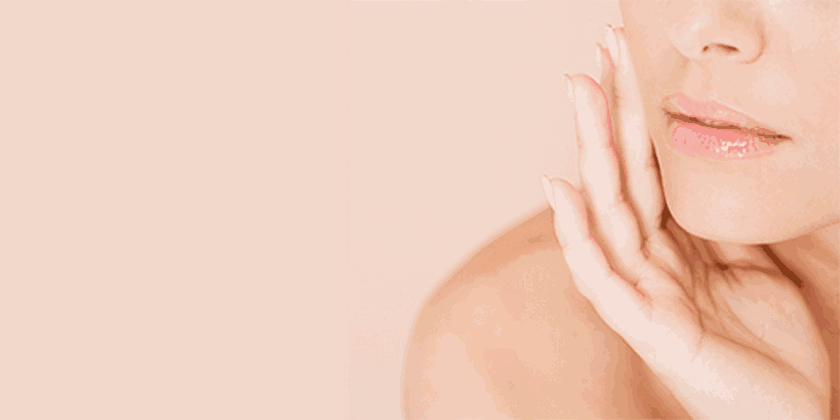We all know the importance of a good angle for hiding a double chin in a selfie. Unfortunately, getting rid of one in real life is a little trickier. “When somebody comes in with what they call a ‘double chin,’ the first thing I think about is what’s causing this?” says Lynn Jeffers, M.D., M.B.A., F.A.C.S., president of the American Society of Plastic Surgeons. “There are many different reasons for it so there’s no one-size-fits-all solution.” Dr. Jeffers points out while some of us would love to be able to banish a double chin with a few stretches or face yoga exercises, there’s no real proof of their effectiveness. “As far as I know, there are no studies showing that they work,” she says. “However, they probably don’t hurt so there is little downside in trying.”
The bottom line is, it may take a visit to a physician to help you determine whether your bone structure, muscles, fat, or skin elasticity — or a combo of several of these — is to blame. And it may take a procedure to give you the results you want.
Here are a few causes of a double chin and possible treatment options:
An undefined jawline
Dr. Jeffers says you have to start by thinking about the deepest layer of support in your neck or chin area — your bones. “When some people complain about their double chin, what they’re really complaining about is actually an undefined jawline,” she says. “If you think about it, if you don’t have a strong enough chin bone, then you don’t have that support so it accentuates your double chin.”
How to treat an undefined jawline:
- Fillers. For a mild case, injections of dermal fillers or even fat can help add definition to a chin.
- Surgery. More severe cases may require chin augmentation surgery, in which a chin implant may be inserted or your jaw bones may be moved or reshaped.
A tense neck muscle
The platysma muscle starts at your clavicle and runs up your neck to your lower jaw. If you often find yourself gritting your teeth, you may find that tension causes banding in this muscle, says Dr. Jeffers.
How to treat a tense neck muscle:
- Stretching: For mild cases, you may want to try stretches to elongate your neck — like tilting your head back and pressing your tongue to the roof of your mouth.
- Botox. In a procedure called the Nefertiti Lift, injections of botulism toxin help relax the platysma muscle and provide more definition to your jaw.
- Surgery. If necessary, a plastic surgeon can rearrange or remove parts of the platysma muscle to give your neck a full “lift.”
Related Story
Here’s Everything to Know About Face Yoga
Excess fat
This is what we usually blame for a double chin. The good news is there are plenty of ways to help get rid of it and provide more definition.
- Radio frequency or ultrasound lasers: There are a variety of different brands out there, but these minimally invasive energy-based treatments work by heating targeted layers to tighten soft tissue, says Dr. Jeffers. The heat kills fat cells for your body to eliminate over the next few months.
- CoolSculpting: This process uses cold temperatures to freeze and kill fat cells for your body to get rid of.
- Kybella: Delivered as injections, this drug helps break down and dissolve fat cells.
- Liposuction: During surgery, a doctor can remove fat cells from specific spots to reshape your neck and chin.
- Weight loss: “In general, when you lose weight, you lose fat across your entire body so it should help if fat is your main problem and it’s not a bone structure, muscle, or other issue,” says Dr. Jeffers.
A loss of skin elasticity
Skin that loses its ability to recover after being stretched can start to sag below your jaw and create the look of a double chin. “This happens with aging, genetics, and exposure to the elements,” says Dr. Jeffers. No matter what, she says you should aim to have a good skincare regimen and follow a healthy diet, but these targeted treatments may also help.
- Radio frequency or ultrasound lasers: These use heat to tighten skin. Sometimes, if you reduce fat via liposuction, radio frequency or ultrasound lasers can help keep skin taught afterward, says Dr. Jeffers.
- Thread lift: Threads are inserted under your skin in a specific pattern to help support your tissue — kind of like an invisible hammock.
- Topicals: A regimen that includes daily sunscreen, vitamin C, and a retinol cream won’t work miracles, but it should help keep your skin as smooth and taught as possible.











